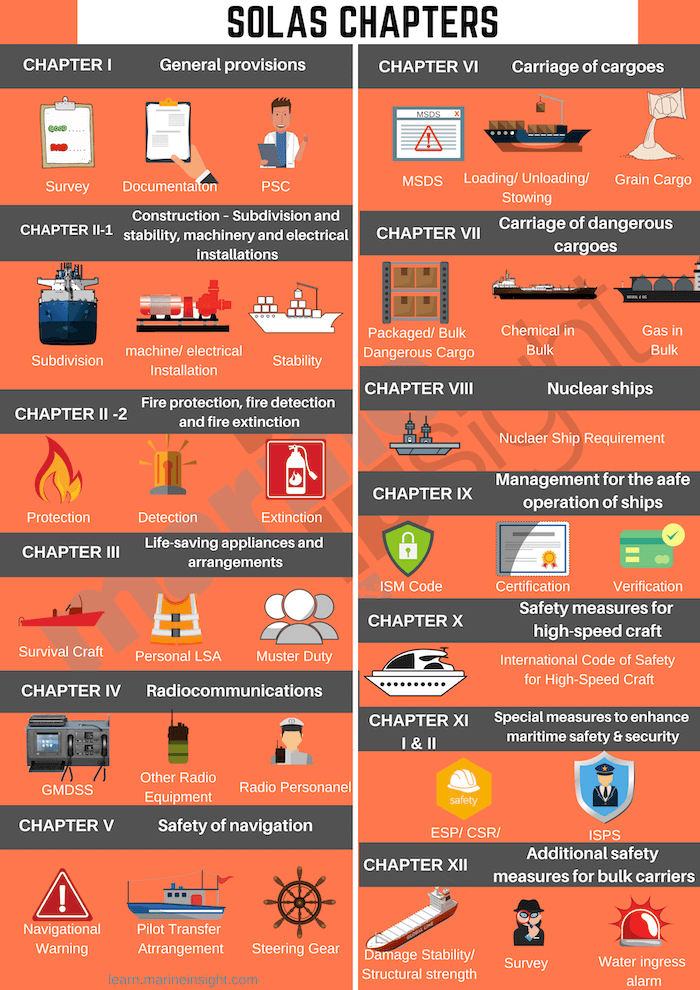Safety of Life At Sea (SOLAS)
Assalammualaikum and how's it hanging yall. Its me again and welcome to my page. So today we are going to talk about SOLAS or safety of life at sea
The SOLAS Convention in its successive forms is generally regarded as the most important of all international treaties concerning the safety of merchant ships. The first version was adopted in 1914, in response to the Titanic disaster, the second in 1929, the third in 1948, and the fourth in 1960.
Objectives
The main objective of the SOLAS Convention is to specify minimum standards for the construction, equipment and operation of ships, compatible with their safety. Flag States are responsible for ensuring that ships under their flag comply with its requirements, and a number of certificates are prescribed in the Convention as proof that this has been done. Control provisions also allow Contracting Governments to inspect ships of other Contracting States if there are clear grounds for believing that the ship and its equipment do not substantially comply with the requirements of the Convention - this procedure is known as port State control. The current SOLAS Convention includes Articles setting out general obligations, amendment procedure and so on, followed by an Annex divided into 14 Chapters.
 |
| Source: Google Images |
Chapters
Chapter I – General Provisions: Surveys and certification of all the safety items etc are included.
Chapter II-1 – Construction – Subdivision and stability, machinery and electrical installations: Deals with watertight integrity of the ship, especially for passenger vessel.
Chapter II-2 – Fire protection, fire detection and fire extinction: This chapter elaborates the means and measure for fire protection in accommodation, cargo spaces and engine room for the passenger, cargo and tanker ship.
Chapter III – Life-saving appliances and arrangements: All the life-saving appliances and there use in different situations is described.
 |
| Source :Google Image |
Chapter IV – Radio communications: Includes requirements of GMDSS, SART, EPIRB etc for cargo and passenger vessel.
 |
| Source : Google Images |
Chapter V – Safety of navigation: This chapter deals with all the seagoing vessels of all sizes, from boats to VLCCs, and includes passage planning, navigation, distress signal etc.
 |
| Source : Google Images |
Chapter VI – Carriage of Cargoes: This chapter defines storage and securing of different types of cargo and containers, but does not include oil and gas cargo.
Chapter VII – Carriage of dangerous goods: Defines the International Maritime Goods Code for storage and transportation of dangerous goods.
Chapter VIII – Nuclear ships: The code of safety for a nuclear-propelled ship is stated in this chapter.
Chapter IX – Management for the Safe Operation of Ships: The International Safety Management code for ship owner and the operator is described clearly.
Chapter X – Safety measures for high-speed craft: safety code for the high-speed craft is explained.
Chapter XI-1 & 2– Special measures to enhance maritime safety: Special and enhanced survey for safe operation, other operational requirements and ISPS code is briefed in this chapter.
Chapter XII – Additional safety measures for bulk carriers: Includes safety requirement for above 150 meters length bulk carrier.
Chapter XIII – Verification of Compliance
Chapter XIV -Safety Measures for Ships Operating in Polar Waters

New SOLAS regulation II-1/19-1 – amendments entering into force on 1 January 2020: Introduced by IMO resolution MSC.421(98), and introduces a requirement for damage control drills for passenger ships to be carried out every 3 months, and applies to all passenger ships on or after 1 January 2020. See Class News 40/2017.
For a more in-depth overview of upcoming changes to mandatory statutory regulations and instruments, see our Future IMO legislation page.That's all for now, I hope you guys did learn a little bit of something about SOLAS which due to the sinking of titanic brought it to life until now.
Thank You for your time and I will see you guys in the next one
Source Website: Marine Insight and IMO
Comments
Post a Comment